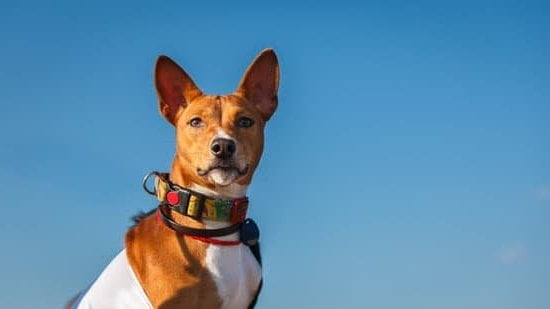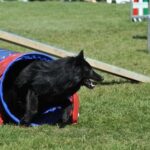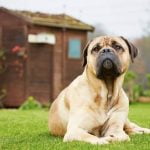Is your year old dog still struggling with house training? In this article, we will explore how to effectively house train a year old dog. House training an older dog can be challenging, but with the right understanding, patience, and consistency, it is definitely achievable.
At one year old, dogs may already have established habits and behaviors that can make house training more difficult than with a puppy. Understanding your dog’s behavior and potty needs at this age is crucial in order to successfully train them. With realistic expectations and a consistent routine, you can set your dog up for success in their house training journey.
In the following sections, we will discuss the specific challenges of house training an adult dog and provide tips for using crate training effectively. We will also address setbacks and accidents, as well as how to overcome them with patience and persistence. By the end of this article, you will have a comprehensive understanding of how to approach house training a year old dog.
Understanding Your Dog’s Behavior and Potty Needs at One Year Old
When it comes to house training a year old dog, it’s essential to understand their behavior and potty needs at this stage of their development. By the age of one, most dogs have better bladder control and are able to hold their pee for longer periods compared to when they were puppies. However, they still need to go out regularly, especially after meals, playtime, and naps.
To successfully house train a year old dog, it’s important to observe their behavior and learn their cues for when they need to go out. Some signs that your dog may need to relieve themselves include pacing, whining, scratching at the door, or sniffing around. By paying attention to these behaviors, you can proactively take them outside before accidents happen indoors.
Additionally, understanding your dog’s routine and schedule is crucial for successful house training. Take note of when they typically eat, drink water, and eliminate waste. This will help you anticipate when they are most likely to need a potty break and prevent accidents inside the house.
Here are some tips for understanding your dog’s behavior and potty needs at one year old:
- Observe their body language for signs that they need to go out
- Keep track of their daily routine including meals, water intake, and potty breaks
- Take them out regularly after meals, playtime, and naps
- Be patient and consistent in your approach to house training
By understanding your dog’s behavior and needs at this stage of their development, you can set realistic expectations and create an effective house training plan that fits their individual requirements. With patience and consistency, you can successfully teach your year old dog where to do their business.
Setting Realistic Expectations for House Training a Year Old Dog
When it comes to house training a year old dog, it’s important to set realistic expectations. While younger puppies might pick up on training more quickly, adult dogs can still learn and adapt with the right approach. It’s essential to understand that older dogs may have established habits that need to be unlearned, which can take time and patience.
The key to setting realistic expectations for house training a year old dog is understanding that it may not happen overnight. It’s common for older dogs to take longer to adjust to new routines and training methods. Additionally, they may have developed behaviors that need to be modified, which requires consistent effort and reinforcement.
One approach to setting realistic expectations is to focus on progress rather than perfection. Celebrate small victories along the way, such as fewer accidents in the house or improved communication from your dog when they need to go outside. By acknowledging and rewarding these incremental improvements, you can build momentum and motivate your dog to continue learning.
It’s also important to recognize that every dog is different. Some may pick up on house training quickly, while others may take more time. This variability is normal, so it’s essential not to compare your dog’s progress with that of other dogs. Instead, focus on your unique pet and their individual needs as you work towards successful house training.
| Setting Realistic Expectations | House Training an Older Dog |
|---|---|
| Understand that older dogs may have established habits | Patience and Persistence are key when dealing with setbacks |
| Celebrate small victories and acknowledge incremental improvements | Focus on progress rather than perfection |
| Recognize that every dog is different | Acknowledge your unique pet’s individual needs while working towards success |
Creating a Consistent Routine for Potty Breaks and Training Sessions
Consistency is key when it comes to house training a year old dog. By establishing a regular routine for potty breaks and training sessions, you can help your dog understand where and when they should go to the bathroom. Start by taking your dog out first thing in the morning, after meals, before bedtime, and at regular intervals throughout the day. This will help them develop a routine and reduce the likelihood of accidents in the house.
When you take your dog outside for potty breaks, choose a designated area where you want them to go. Use a specific command or cue such as “go potty” to encourage elimination. Be patient and give them ample time to do their business. Remember to praise and reward them immediately after they’ve eliminated in the correct spot. This positive reinforcement will help reinforce good behavior and let your dog know that they’ve done the right thing.
In addition to regular potty breaks, it’s important to schedule consistent training sessions with your year old dog. Use these sessions to reinforce good bathroom habits, work on obedience commands, and strengthen the bond between you and your pet. Training should be positive and interactive, with plenty of rewards for good behavior. With time and patience, your dog will learn how to house train a year old dog effectively.
| Routine | Potty Breaks |
|---|---|
| First thing in the morning | Establish designated area |
| After meals | Use specific command or cue |
| Before bedtime | Praise and reward immediately after elimination |
Using Positive Reinforcement and Reward-Based Training Methods
When it comes to house training a year old dog, positive reinforcement and reward-based training methods can be incredibly effective. These techniques involve rewarding your dog for displaying the desired behavior, which in this case is going potty outside. Here are some tips on how to use these methods effectively:
- Use treats: When your dog successfully goes potty outside, immediately give them a small treat and lots of praise. This positive reinforcement helps them make the connection between going potty outside and receiving a reward.
- Consistency is key: Make sure to consistently reward your dog every time they go to the bathroom outside. This will help reinforce the behavior and encourage them to continue doing so in the future.
- Use verbal cues: Pairing a specific verbal cue, such as “go potty” or “do your business,” with the act of going potty can help your dog understand what is expected of them. Over time, they will come to associate the cue with the action.
It’s important to remember that not all dogs respond to the same rewards, so it may take some trial and error to figure out what motivates your individual dog. Some may respond best to food treats, while others may be more motivated by toys or verbal praise.
In addition to using positive reinforcement and rewards, it’s also crucial to remain patient and consistent throughout the house training process. It’s natural for there to be setbacks and accidents along the way, but by staying persistent and continuing to use these methods, you can help your year old dog learn good potty habits for long-term success.
Ultimately, using positive reinforcement and reward-based training methods can make the house training process more enjoyable for both you and your dog while also helping them understand what behavior is expected of them. With patience and consistency, you can effectively teach a year old dog where they should go potty.
Dealing With Setbacks and Accidents
House training a year old dog can be challenging, but dealing with setbacks and accidents requires patience and persistence. It’s important to understand that accidents are a normal part of the house training process, especially when working with an older dog. Here are some strategies for handling setbacks and accidents while house training your adult dog.
Understanding the Cause of Accidents
One of the first steps in addressing setbacks with house training is understanding why they occur. Accidents can happen for a variety of reasons, including a medical issue, anxiety, or confusion about where they should eliminate. Observing your dog’s behavior and looking for patterns can help you determine the root cause of accidents and address it effectively.
Reinforce Positive Behavior
When your adult dog has an accident inside the house, it’s important to remain calm and avoid punishment. Instead, focus on reinforcing positive behavior by taking your dog outside immediately after the accident occurs. This will help them make the connection between eliminating outside and receiving praise or rewards.
Consistency Is Key
Consistency is crucial when dealing with setbacks and accidents during house training. Stick to a consistent routine for potty breaks and training sessions, and be patient as your dog learns new habits. Avoid making sudden changes to their schedule or environment, as this can lead to confusion and more accidents.
By approaching setbacks with patience and persistence, you can effectively address accidents during the house training process. Remember that each dog is unique, so be prepared to adjust your training methods based on your dog’s individual needs. With time and consistency, you can help your adult dog develop good potty habits and successfully complete their house training journey.
Tips for Using Crate Training Effectively With an Older Dog
Crate training can be a valuable tool when house training a year old dog, as it helps to create a safe and comfortable space for your pet while also encouraging good potty habits. When using crate training with an older dog, it’s important to approach the process with patience and understanding. Remember that each dog is different, and the time it takes for them to adjust to crate training may vary.
Begin by introducing your dog to the crate in a positive way, allowing them to explore it at their own pace and associating it with positive experiences such as treats or toys. Make sure that the crate is large enough for your dog to stand up, turn around, and lie down comfortably. It should feel like a cozy den rather than a confined space.
To effectively use crate training for house training a year old dog, establish a consistent schedule for potty breaks and meals. Take your dog outside to eliminate first thing in the morning, after meals, before bedtime, and any time they have been crated for an extended period. This routine helps teach your dog when and where they should go potty, making house training more successful.
When using the crate for house training purposes, never use it as a form of punishment. The crate should be associated with positive experiences and relaxation rather than isolation or confinement. Additionally, avoid leaving your dog crated for long periods of time without access to potty breaks or exercise. With patience, consistency, and positive reinforcement, crate training can be an effective tool in successfully house training a year old dog.
Addressing Specific Challenges for House Training an Adult Dog
Understanding the Unique Challenges
House training an adult dog comes with its own set of challenges, especially if the dog has developed certain habits over time. It’s important to understand that a year-old dog may have already established routines and behaviors, so patience and consistency are key. Additionally, adult dogs may have different physical or medical needs that can affect their potty training.
Adjusting Training Techniques
When house training a year old dog, it’s important to adjust your training techniques based on their individual needs. For example, some older dogs may need more frequent potty breaks due to decreased bladder control or other health issues. Understanding these needs and making necessary adjustments will help set your dog up for success.
Consistency Is Key
With adult dogs, consistency is even more important when it comes to house training. Stick to a regular schedule for potty breaks and training sessions, and make sure all family members are on board with the same routine. This will help your dog understand what is expected of them and reduce the likelihood of accidents in the house. Remember, positive reinforcement and patience are crucial when addressing specific challenges for house training an adult dog.
Conclusion
In conclusion, house training a year old dog may seem like a daunting task, but with patience and persistence, it is absolutely achievable. By understanding your dog’s behavior and potty needs at this stage of their life, setting realistic expectations, and creating a consistent routine for potty breaks and training sessions, you can set your furry friend up for success.
Using positive reinforcement and reward-based training methods will also go a long way in making the process smoother for both you and your dog.
It’s important to remember that setbacks and accidents are a normal part of the house training process, especially with an older dog. Instead of getting discouraged, it’s crucial to have patience and continue with the training efforts. Many owners find crate training to be an effective tool in the house training process for older dogs. This method helps teach them bladder control and provides them with a safe space.
Overall, successfully house training a year old dog requires dedication and consistency from the owner. By celebrating each small victory along the way and maintaining good habits for the long-term, you can ensure that your furry companion becomes fully house trained.
Remember, every dog is different, so it’s essential to tailor your approach to what works best for your specific four-legged friend. With these tips in mind, you’ll soon have a well-behaved, fully house trained pet on your hands.
Frequently Asked Questions
Can You House Train a 1 Year Old Dog?
Yes, it is possible to house train a 1 year old dog. While it may take more time and patience compared to training a puppy, consistent training and positive reinforcement can help the dog learn where to eliminate.
Can a Dog Be Potty Trained After a Year?
A dog can still be potty trained after a year. It may require extra effort and consistency, but with the right approach, older dogs can learn new habits. Understanding the dog’s behavior and using reward-based training methods are key.
Is It Too Late to Potty Train a Year Old Dog?
It is not too late to potty train a year old dog. Despite the challenges of retraining an older dog, it is definitely possible with proper guidance and perseverance. Understanding the reasons for accidents and addressing them effectively is essential for successful potty training.

Welcome to the blog! I am a professional dog trainer and have been working with dogs for many years. In this blog, I will be discussing various topics related to dog training, including tips, tricks, and advice. I hope you find this information helpful and informative. Thanks for reading!





